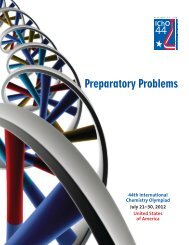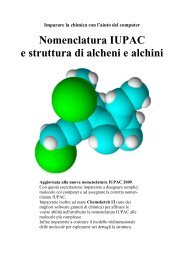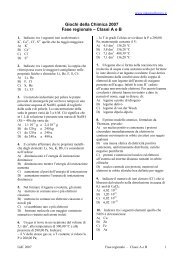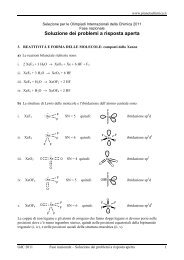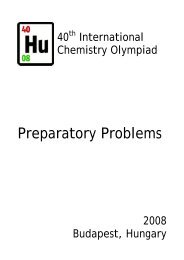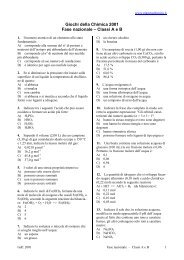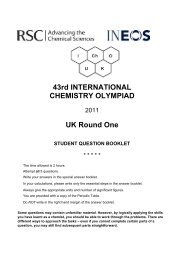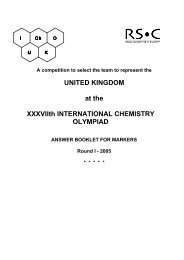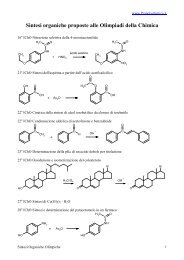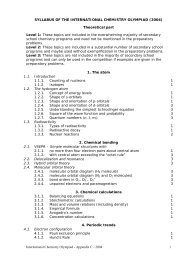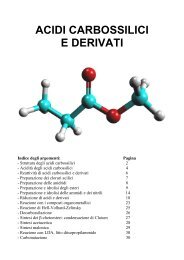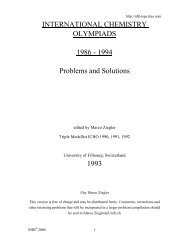Theoretical Test
Theoretical Test
Theoretical Test
You also want an ePaper? Increase the reach of your titles
YUMPU automatically turns print PDFs into web optimized ePapers that Google loves.
2. Detection of Hydrogen (5 pts)Hydrogen is prevalent in the universe. Life in the universe is ultimately based onhydrogen.2-1. There are about 10 23 stars in the universe. Assume that they are like oursun (radius, 700,000 km; density, 1.4 g/cm 3 ; 3/4 hydrogen and 1/4helium by mass). Estimate the number of stellar protons in the universeto one significant figure.In the 1920s, Cecilia Payne discovered, by spectral analysis of starlight, thathydrogen is the most abundant element in most stars.2-2. The electronic energy of a hydrogen atom is given by -C/n 2 relative tozero energy at infinite separation between the electron and the proton(n is the principle quantum number, and C is a constant). For detectionof the n=2→ n=3 transition (656.3 nm in the Balmer series), theelectron in the ground state of the hydrogen atom needs to be excitedfirst to the n=2 state. Calculate the wavelength (in nm) of the absorptionline in the starlight corresponding to the n=1→n=2 transition.2-3. According to Wien's law, the wavelength (λ) corresponding to themaximum light intensity emitted from a blackbody at temperature T isgiven by λT = 2.9×10 -3 m K. Calculate the surface temperature of a starwhose blackbody radiation has a peak intensity corresponding to the n= 1 → n = 2 excitation of hydrogen.The ground state of hydrogen is split into two hyperfine levels due to theinteraction between the magnetic moment of the proton and that of the electron.In 1951, Purcell discovered a spectral line at 1420 MHz due to the hyperfinetransition of hydrogen in interstellar space.2-4. Hydrogen in interstellar space cannot be excited electronically bystarlight. However, the cosmic background radiation, equivalent to 2.7K,can cause the hyperfine transition. Calculate the temperature of a2




